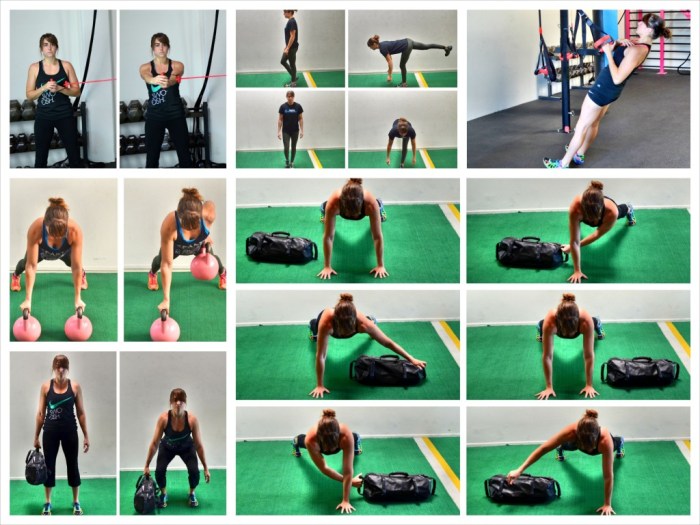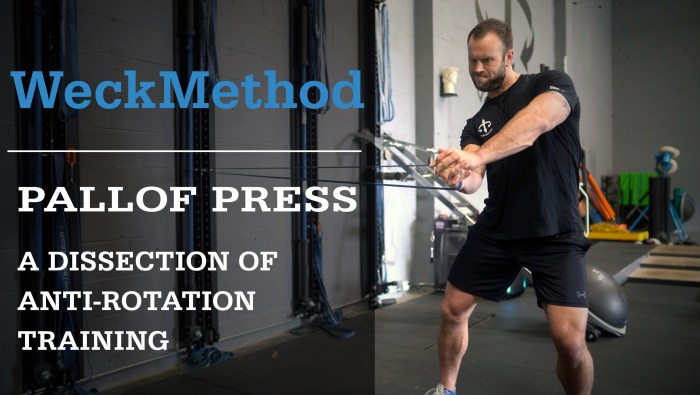Antirotational exercises are often this sort of movement by nature, forming the cornerstone of core stability. These exercises play a pivotal role in enhancing athletic performance, reducing injury risk, and promoting overall physical well-being. By engaging the core musculature in a controlled and targeted manner, antirotational exercises help stabilize the spine, improve balance, and enhance functional movement patterns.
Understanding the mechanics and benefits of antirotational exercises is crucial for fitness professionals, athletes, and individuals seeking to optimize their physical capabilities. This comprehensive guide delves into the world of antirotational exercises, exploring their types, importance, progressions, safety considerations, and common mistakes.
Embark on this journey to unlock the transformative power of antirotational exercises and elevate your fitness to new heights.
Antirotational Exercises: Definition and Purpose

Antirotational exercises involve stabilizing the spine and pelvis against rotational forces. They play a crucial role in enhancing core strength, stability, and balance.
Primary Purpose and Benefits, Antirotational exercises are often this sort of movement by nature
Antirotational exercises:
- Improve core strength and stability
- Enhance balance and coordination
- Reduce risk of injuries, particularly in sports involving rotational movements
Examples of Common Antirotational Exercises
- Plank with arm reach
- Bird dog
- Side plank with leg lift
Types of Antirotational Exercises

| Exercise Name | Description | Target Muscle Groups |
|---|---|---|
| Plank | Hold a plank position, keeping the spine neutral and hips and shoulders aligned. | Abdominals, obliques, glutes |
| Bird Dog | Start in a quadruped position. Extend the right arm forward and the left leg backward simultaneously, keeping the spine stable. | Abdominals, glutes, hamstrings |
| Side Plank | Lie on one side, supporting yourself on the forearm and feet. Lift the hips off the ground, keeping the body in a straight line. | Obliques, glutes, hip abductors |
Importance of Antirotational Exercises in Specific Sports

Antirotational exercises are crucial for athletes in various sports, including:
- Golf:Enhance swing power and accuracy
- Tennis:Improve stability during serves and groundstrokes
- Football:Reduce risk of knee and ankle injuries
- Hockey:Improve balance and agility during skating and stick handling
Progression and Variations of Antirotational Exercises: Antirotational Exercises Are Often This Sort Of Movement By Nature
| Level | Exercise Name | Description | Target Muscle Groups |
|---|---|---|---|
| Beginner | Bird Dog | Start in a quadruped position. Extend the right arm forward and the left leg backward simultaneously, keeping the spine stable. | Abdominals, glutes, hamstrings |
| Intermediate | Plank with Arm Reach | Hold a plank position, keeping the spine neutral and hips and shoulders aligned. Reach the right arm forward, then the left arm, while maintaining core stability. | Abdominals, obliques, glutes |
| Advanced | Single-Leg Side Plank with Arm Raise | Start in a side plank on the right side. Raise the left leg and right arm simultaneously, keeping the body in a straight line. | Obliques, glutes, hip abductors |
Safety Considerations and Common Mistakes

Safety Concerns:
- Perform exercises under the guidance of a qualified professional.
- Avoid excessive weight or resistance, especially if experiencing back or pelvic pain.
- Listen to your body and rest when necessary.
Common Mistakes:
- Arching the back:Keep the spine neutral during exercises.
- Overrotating the hips:Maintain stability and avoid excessive rotation.
- Not engaging the core:Focus on activating the abdominal and back muscles.
Key Questions Answered
What are antirotational exercises?
Antirotational exercises are movements that challenge the body’s ability to resist rotation around the spine. They engage the core musculature to stabilize the spine and pelvis, improving balance and functional movement patterns.
Why are antirotational exercises important?
Antirotational exercises are important for enhancing athletic performance, reducing injury risk, and promoting overall physical well-being. They strengthen the core, improve balance, and enhance functional movement patterns, making them beneficial for individuals of all fitness levels.
How do I incorporate antirotational exercises into my routine?
To incorporate antirotational exercises into your routine, start by choosing exercises that are appropriate for your fitness level. Gradually increase the difficulty and intensity of the exercises as you progress. Focus on maintaining proper form and technique to maximize the benefits and minimize the risk of injury.